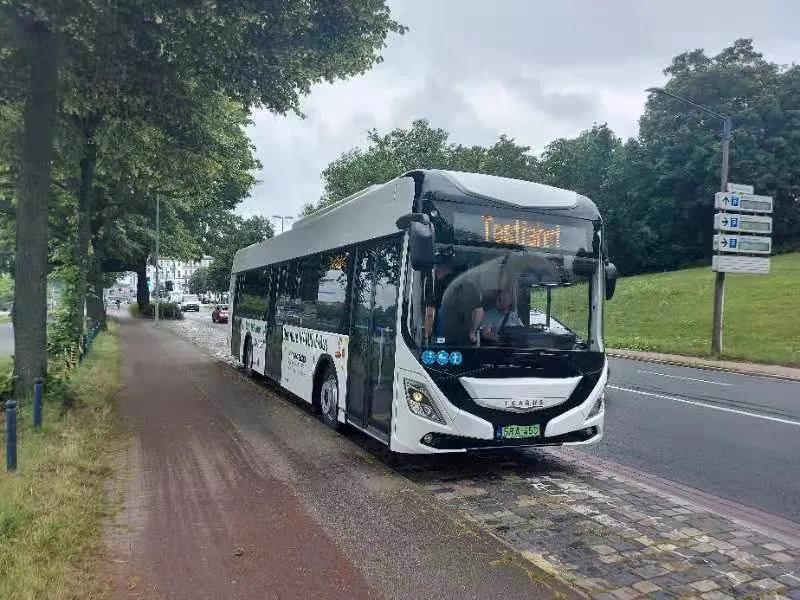Is a Pure Electric City Bus the Smart Upgrade for Your Shuttle Fleet?
Apr. 15, 2025
Tourism and hospitality transportation is evolving fast. Whether you operate airport shuttles, resort transfers, or sightseeing services, passengers now expect more than just convenience—they want quiet, clean, and modern travel experiences.
So here’s the question many shuttle fleet operators are asking:
Is it time to switch to a Pure Electric City Bus?
Let’s explore this through a practical lens—cost, performance, and customer satisfaction.
What Is a Pure Electric City Bus?
A Pure Electric City Bus runs entirely on rechargeable batteries with no internal combustion engine. It offers a smooth, quiet ride and produces zero emissions during operation—making it an ideal choice for short, frequent shuttle routes in urban and tourism-heavy areas.
Key features include:
Battery-powered drivetrain with no tailpipe emissions
Quiet operation—ideal for hotels, airports, and scenic areas
Low maintenance due to fewer moving parts
Eligible for green fleet incentives in many regions
What Are the Common Concerns for Shuttle Operators?
Many shuttle service providers hesitate to upgrade due to practical concerns:
1. High upfront cost
Electric buses often have a higher sticker price than diesel models.
2. Charging infrastructure
Not every operator has charging stations in place—or knows what they need.
3. Range anxiety
Can an electric bus last an entire day on a single charge?
Breaking It Down: How Electric Buses Solve Real Problems
Let’s compare Pure Electric City Buses to traditional diesel shuttles across key operational factors:
Performance Comparison
| Feature | Diesel Shuttle | Pure Electric City Bus |
|---|---|---|
| Fuel Cost (per 100km) | High, volatile | ~30–50% lower, more stable |
| Maintenance Frequency | Frequent oil/filter changes | Minimal, fewer moving parts |
| Passenger Ride Comfort | Noisy, vibrations | Silent, smoother ride |
| Emissions | CO₂, NOx, PM emissions | Zero local emissions |
| Night Operation Suitability | Moderate noise restrictions | Ideal for night-time service |
Total Cost of Ownership (TCO)
While the upfront price of electric buses is higher, the overall cost of ownership often turns out to be lower over time. Here's a simplified estimate over 8 years of use:
| Category | Diesel Bus | Pure Electric Bus |
|---|---|---|
| Initial Cost | $180,000 | $300,000 |
| Fuel Cost (8 yrs) | ~$96,000 | ~$40,000 |
| Maintenance (8 yrs) | ~$40,000 | ~$15,000 |
| Total Cost | $316,000 | $355,000 |
| With Govt Incentives | – | $305,000 |
Result: With available subsidies and lower operating costs, the long-term expense gap narrows significantly—and ROI improves faster if fuel prices continue to rise.
Why It's Smart for Tourism Shuttle Operators
For tourism-focused companies, switching to a Pure Electric City Bus isn’t just about cost—it’s also about brand image and guest satisfaction.
Benefits that directly impact your business:
Quiet operation enhances guest comfort
Eco-friendly image appeals to sustainability-conscious tourists
Low-vibration ride ideal for premium hotel/resort transfers
Night-friendly use for early/late airport shuttles
Is Your Fleet Ready for the Switch?
You should seriously consider upgrading if:
Your shuttles travel less than 300 km/day (most do)
You have consistent routes or fixed locations (e.g., airport–hotel loops)
You want to reduce fuel and maintenance costs over 5–8 years
You’re seeking green tourism certifications or ESG points
Final Thoughts
A Pure Electric City Bus isn’t just a technical upgrade—it’s a strategic move. For shuttle fleet operators focused on long-term value, passenger satisfaction, and eco-conscious branding, the electric path is not just smart—it’s inevitable.
1
0
0
None
None



Comments
All Comments (0)